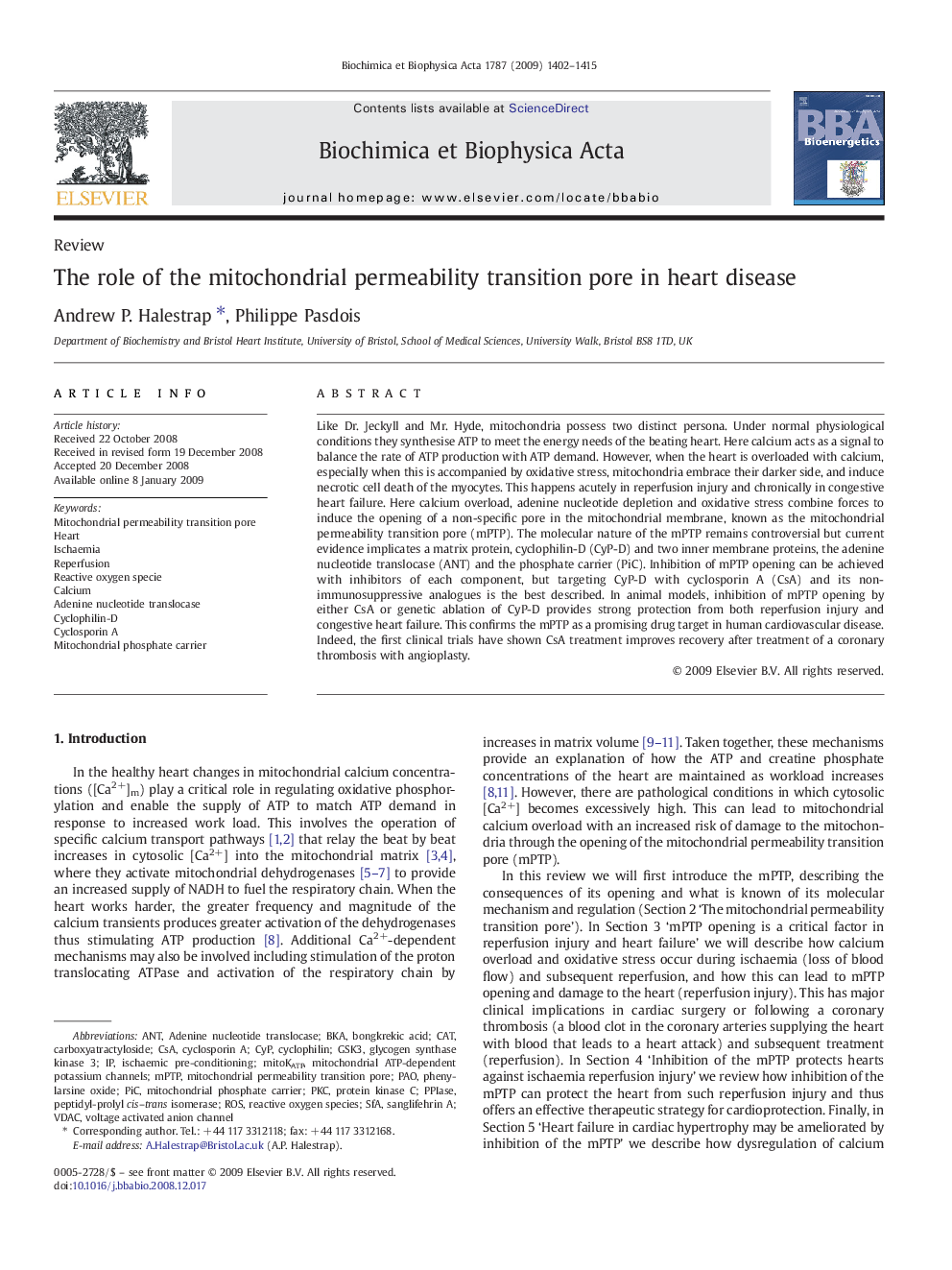| کد مقاله | کد نشریه | سال انتشار | مقاله انگلیسی | نسخه تمام متن |
|---|---|---|---|---|
| 1943044 | 1052642 | 2009 | 14 صفحه PDF | دانلود رایگان |

Like Dr. Jeckyll and Mr. Hyde, mitochondria possess two distinct persona. Under normal physiological conditions they synthesise ATP to meet the energy needs of the beating heart. Here calcium acts as a signal to balance the rate of ATP production with ATP demand. However, when the heart is overloaded with calcium, especially when this is accompanied by oxidative stress, mitochondria embrace their darker side, and induce necrotic cell death of the myocytes. This happens acutely in reperfusion injury and chronically in congestive heart failure. Here calcium overload, adenine nucleotide depletion and oxidative stress combine forces to induce the opening of a non-specific pore in the mitochondrial membrane, known as the mitochondrial permeability transition pore (mPTP). The molecular nature of the mPTP remains controversial but current evidence implicates a matrix protein, cyclophilin-D (CyP-D) and two inner membrane proteins, the adenine nucleotide translocase (ANT) and the phosphate carrier (PiC). Inhibition of mPTP opening can be achieved with inhibitors of each component, but targeting CyP-D with cyclosporin A (CsA) and its non-immunosuppressive analogues is the best described. In animal models, inhibition of mPTP opening by either CsA or genetic ablation of CyP-D provides strong protection from both reperfusion injury and congestive heart failure. This confirms the mPTP as a promising drug target in human cardiovascular disease. Indeed, the first clinical trials have shown CsA treatment improves recovery after treatment of a coronary thrombosis with angioplasty.
Journal: Biochimica et Biophysica Acta (BBA) - Bioenergetics - Volume 1787, Issue 11, November 2009, Pages 1402–1415